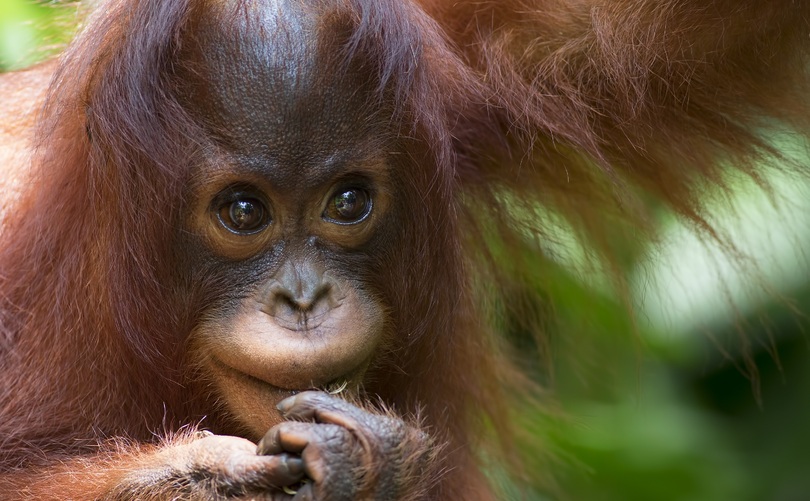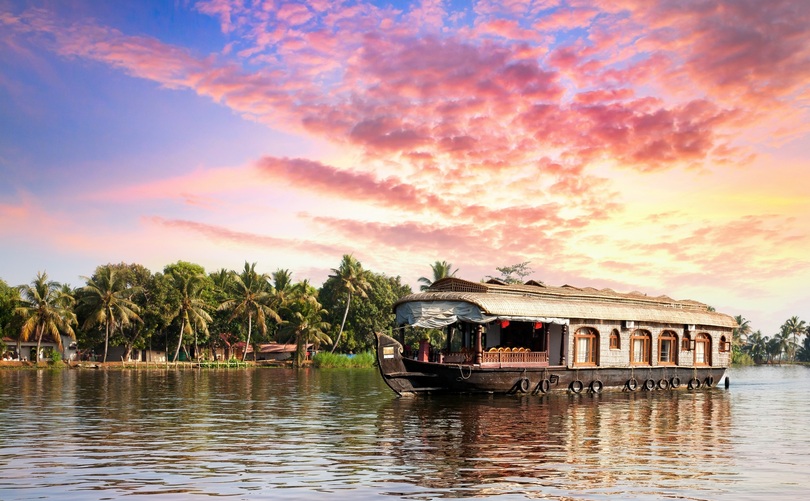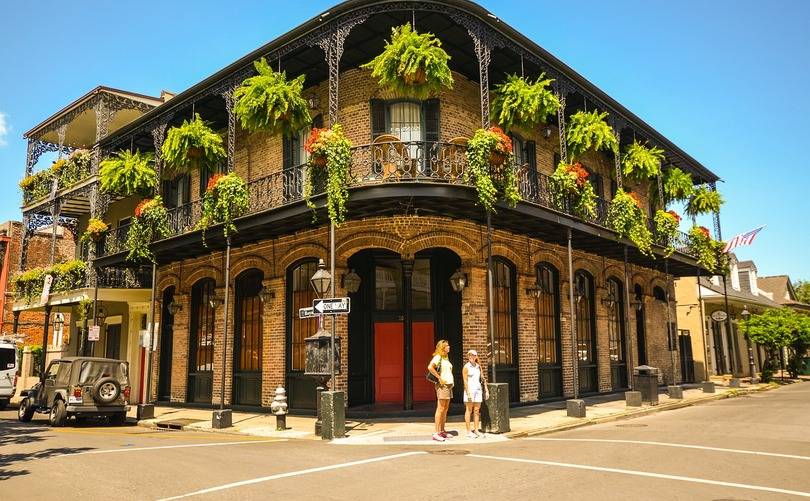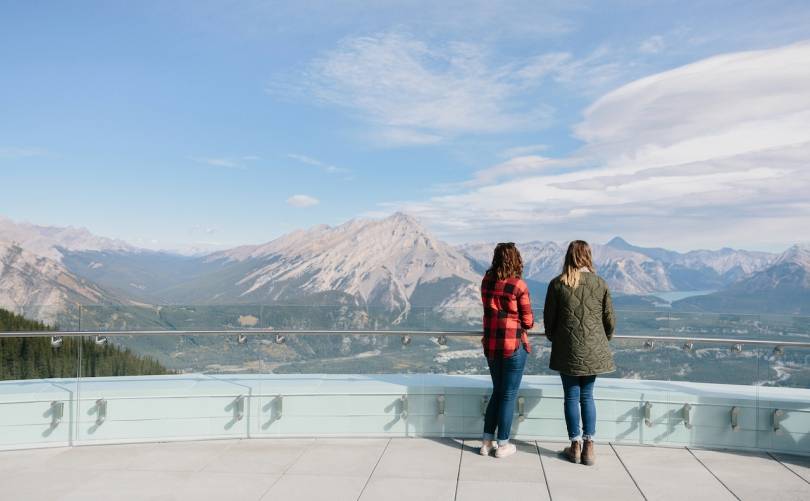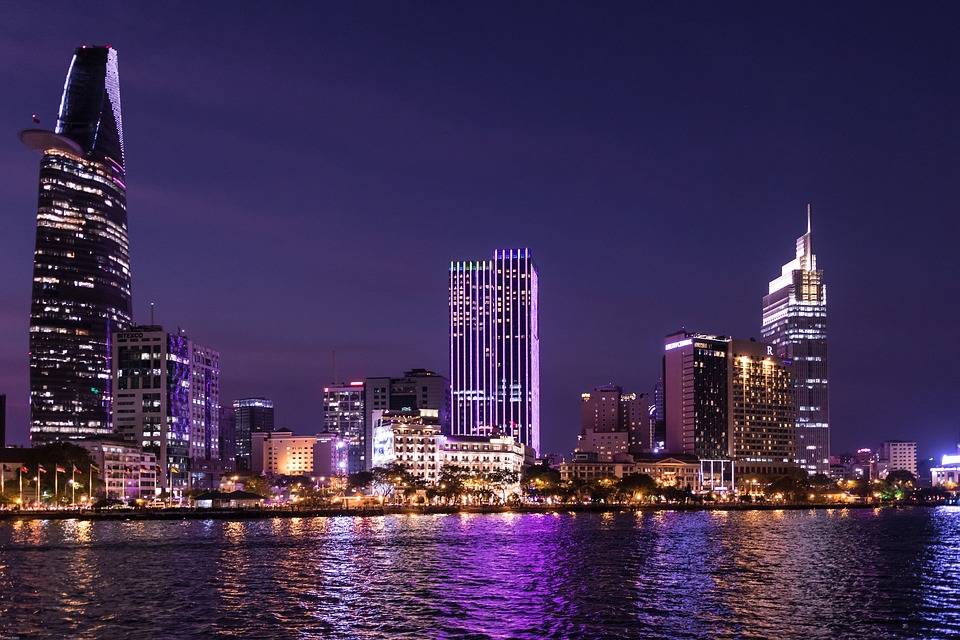
Southern Indochina Discovery (8 Days/7 Nights)
Ho Chi Minh
Experience Vietnam and Cambodia in this 8 Days/7 Nights Journey to Ho Chi Minh City - Cu Chi Tunnels, Cai Be, Vinh Long – Can Tho, Chau Doc, Phnom Penh, Siem Reap, Angkor Complex, Banteay Srei – Banteay Samre, Ta Proh, Visit Local Monastery and Siem Reap!
Highlights
- Ho Chi Minh City - City tour
- Floating Market/Mekong Delta - Observe the lively activities of local merchants trading from laden vessels
- Phnom Penh - Explore the ancient city
- Siem Reap - Visit a local monastery and participate in a good luck blessing ceremony
- Day 1 - Ho Chi Minh City – Arrival
- Day 2 - Ho Chi Minh City - Cu Chi Tunnels – Sightseeing
- Day 3 - Ho Chi Minh City – Cai Be – Vinh Long – Can Tho
- Day 4 - Can Tho – Chau Doc
- Day 5 - Chau Doc - Phnom Penh by Boat
- Day 6 - Phnom Penh - Siem Reap - Angkor Complex
- Day 7 - Siem Reap – Banteay Srei – Banteay Samre – Ta Prohm – Visit Local Monastery for Blessing Ceremony
- Day 8 - Siem Reap - Departure
- Additional Information
Arrive in Ho Chi Minh City and transfer to your hotel. The rest of the day is at your leisure.
Overnight in Ho Chi Minh City
Prostyle Hotel Ho Chi Minh
Prostyle Hotel Ho Chi Minh is located in the heart of Ho Chi Minh City, a 3-minute walk from Vincom Center. It is conveniently located a 24-minute drive from Tan Son Nhat International Airport. Tourist attractions, gourmet spots, shopping spots and business districts are concentrated in the center of District 1 of Ho Chi Minh City. Have a good time at Prostyle Hotel Ho Chi Minh. and hairdryer are provided. Guests can dine at Asian Ruby's restaurant and bar, which serves Vietnamese and European dishes. Asian Ruby Hotel provides a fitness room, laundry service and bike rental. Massage services are available.
In the morning you will visit the amazing Cu Chi Tunnels where the Vietnamese guerrillas built a labyrinth of narrow tunnels as hideouts during the war. Return to Ho Chi Minh City in the afternoon for a half-day city tour. Highlights include the photo stops at the Reunification Palace, the Notre Dame Cathedral, the Central Post Office. Visit a local market in Chinatown and either the Thien Hau Temple or the Quan Am Pagoda.
Overnight in Ho Chi Minh City [Breakfast]
Prostyle Hotel Ho Chi Minh
Prostyle Hotel Ho Chi Minh is located in the heart of Ho Chi Minh City, a 3-minute walk from Vincom Center. It is conveniently located a 24-minute drive from Tan Son Nhat International Airport. Tourist attractions, gourmet spots, shopping spots and business districts are concentrated in the center of District 1 of Ho Chi Minh City. Have a good time at Prostyle Hotel Ho Chi Minh. and hairdryer are provided. Guests can dine at Asian Ruby's restaurant and bar, which serves Vietnamese and European dishes. Asian Ruby Hotel provides a fitness room, laundry service and bike rental. Massage services are available.
CU CHI TUNNELS IN HO CHI MINH
The Cu Chi Tunnels are basically a huge war museum offering visitors a sneak peak at the underground life of Viet Cong-era soldiers. Comprising more than 120km of tunnels, they were first started around 1948 when the Viet Cong were fighting the French.
Nowadays, the restored tunnels are one of Vietnam’s top attractions and are especially popular with non-Vietnamese tourists. People follow the routes of the underground army and before entering the tunnels visitors will have the chance to watch a short movie and get to understand beforehand how this unusual tunnel system actually works.
CENTRAL POST OFFICE IN HO CHI MINH CITY
The Central Post Office in Ho Chi Minh is a beautifully preserved remnant of French colonial times and perhaps the grandest post office in all of Southeast Asia. Located next door to Notre Dame Cathedral, the two cultural sites can be visited together and offers visitors a chance to imagine life in Vietnam during the times of the Indochinese Empire. The building was designed by Gustave Eiffel – the renowned engineer who also designed the Statue of Liberty and the Eiffel Tower – and features arched windows and wooden shutters, just as it would have in its heyday in the late 19th Century.
The Central Post Office in Ho Chi Minh was constructed between 1886 and 1891 and once inside, the looping arches, intricately designed marble floors and antiquated telephone boxes all serve as a reminder of the importance the post office played in days before email and mobile phones. Although the architecture is distinctly French, the large portrait of Ho Chi Minh hanging high above everyone at the far end of the building reminds everyone we are definitely in Vietnam. Painted onto walls overhead are two maps of the region; one of them showing the telegraph lines that crisscross Vietnam and Cambodia and the other displaying a map of the Saigon region in 1892.
Although the experience is a fascinating glimpse into history, the fact that this is still a functioning post office makes the experience even sweeter, and we encourage everyone to send a letter or postcard from here – it’s a piece of living history where even the old fashioned glue pots are still in use for sticking stamps to letters. There are two wings branching out from the main office, selling souvenirs, postcards and lacquerware but the prices are inflated and the same products can probably be found elsewhere for a better price.
NOTRE DAME CATHEDRAL IN HO CHI MINH
In a quiet corner of bustling downtown Ho Chi Minh City stands Notre Dame Cathedral, the one remaining stronghold of Catholicism in the largely Buddhist Vietnam. Built in the late 1880s by French colonists, it was formerly called Saigon Church. The name Notre Dame was given after the installation of the statue ‘Peaceful Notre Dame’ in 1959. In 1962, the Vatican conferred the Cathedral status as a basilica and gave it the official name of Saigon Notre Dame Cathedral Basilica.
In a quiet corner of bustling downtown Ho Chi Minh City stands Notre Dame Cathedral, the one remaining stronghold of Catholicism in the largely Buddhist Vietnam.
Built in the late 1880s by French colonists, it was formerly called Saigon Church. The name Notre Dame was given after the installation of the statue ‘Peaceful Notre Dame’ in 1959. In 1962, the Vatican conferred the Cathedral status as a basilica and gave it the official name of Saigon Notre Dame Cathedral Basilica.
REUNIFICATION PALACE IN HO CHI MINH
The iconic Reunification Palace made its name in global history when in 1975 a tank belonging to the North Vietnamese Army crashed through its main gate – thus signifying the end of the Vietnam War. This image is one of the most famous pictures depicting the Reunification Palace which has seen a rich and varied history and once served as the base of the US-backed Vietnamese General Ngo Dinh Diem during the Vietnam War, until his assassination in 1963.
The palace is like a time capsule frozen in 1975 with two of the original tanks used in the capture of the palace parked in the grounds. Originally the site of the Nordom Palace also known as the Governor’s Palace its first role was as a home and workplace for the then French Governor of Cochinchina. The Reunification Palace is a landmark not to be missed by any tourist visiting Ho Chi Minh City. Surrounded by lush tropical gardens, the palace hides secret rooms, antique furniture and a command bunker within its eerie corridors. The Reunification Palace is still in use to host occasions including APEC summits and national events of significant importance.
Drive to Cai Be and take a boat cruise to the Cai Be area. You will have a chance to observe the lively activities of local merchants trading produce from fully laden vessels. Visit a village where you will see some family run businesses that rice cakes and rice paper. After eating lunch at a local house, you will proceed to Binh Hoa Phuoc islet for a sampan ride before disembarking at Vinh Long for your drive to Can Tho.
Overnight in Can Tho. [Breakfast, Lunch]
Kim Tho Hotel
Offering city or river views, air-conditioned rooms are equipped with a wardrobe, seating area, minibar and a flat-screen TV with cable channels. Rooms come with en suite bathroom that includes bathtub and free toiletries.
Enjoy a morning boat cruise to the Cai Rang Floating Market full of small boats and vessels that deliver goods from all parts of the Mekong Delta. You will have a chance to observe lively activities of merchants trading their produce as well as enjoying the seasonal fruit before proceeding to Chau Doc, a trading port near the Cambodian border. Upon arrival, enjoy a boat cruise to the Chau Giang fish farm - where fish are raised in cages beneath floating houses - as well as the Cham village.
Overnight in Chau Doc. [Breakfast]
Chau Pho
Chau Pho Hotel is located at the centre of Chau Doc City which is among the prettiest 3-star hotels in Chau Doc City. Just 15 minutes drive from the hotel are tourist sites and historical/cultural sites such as Sam Mountain, Thaoi Ngoc Hau Tomb, Tay An Pagoda and Champa Village.
A half day cruise to Phnom Penh gives you a chance to appreciate the immensity of the Mekong River and to witness how locals live and work along the river. Arrive in Phnom Penh and check-in to your hotel. In the afternoon, you will visit some of the capital’s most impressive sites including the Silver Pagoda containing the Emerald Buddha statue, the Royal Palace and Wat Phnom, Phnom Penh’s oldest shrine. Ending the tour by having an-hour relaxing as you get pampered with a rejuvenating traditional Khmer massage at La Rose Spa.
Overnight in Phnom Penh. [Breakfast]
Sokchea Angkor Hotel
With a prime location in the heart of the city's central district, Treasure Oasis offers top class accommodation and exceptional dining options for visitors to Siem Reap.The colonial-style design and traditional Khmer ornaments enhance their guests' experience of the captivating architecture and showcase the refined culture of Cambodia.The hotel welcomes you to a secluded paradise, steeped in rich cultural tradition and filled with warm Khmer hospitality.
Royal Palace
Gleaming in gold, the Royal Palace is one of Phnom Penh?s most splendid architectural achievements. It is home to His Majesty Preah Bat smdech Preah Norodom Sihanouk and Her Majesty Preah Reach Akka-Mohesey Norodom Monineath. The palace was built in 1866 by His Majeaty Preah Bat Norodom, great grandfather to our current King. The Royal Palace is built on the site of the old town. This site was especially chosen by a Commission of Royal Ministers and Astrologers because it had great geographical significance in relation to the King, who was regarded as a direct descendant of the gods, whose role it was to live and govern on earth under the influence of heaven.
The Royal Palace contains some spectacular buildings. Not least of which is the Throne Hall, situated to the left of the main entrance. It boasts a 59-meter tower. The tower roof is beautiful, having been decoratively tiered with golden coloured tiles. This building is used for high official celebrations, coronations and audiences with foreign dignitaries and government officials.
The Royal Treasury and the Napoleon II villa lie south to the Royal Throne Hall. North to this stands the Silver pagoda enclosure, otherwise known as the Pagoda of the Emerald Buddha. The Pagoda?s steps are crafted from Italian marble, and within the throne room the regal floor consists of more than 500 solid silver blocks. If calculated together, they weigh nearly six tones. Displayed a round the room, surrounding the main area, stand plush presents from foreign dignitaries.
The magnificent 17th century emerald Buddha statue is made of Baccarat cuystal and solid gold. It weighs 90 kilograms and is adorned with 9,584 diamonds. Bronze statues stand to it?s left and right sides. Next to these, encased under a glass cover, reside a golden locus. Within this area other ancient treasures include a large Buddha?s footprint, representing the 108 past lives of the Buddha before he was re-incarnated as Prince Siddharta, who subsequently gained enlightenment. On the wall, surrounding the Pagoda compound, (the oldest par of the palace) are hundreds of meters of frescos depicting an episode of the Indian epic Ramayana. These are the biggest mural frescos in South East Asia.
The Royal Palace sits between streets 184 and 240. The main entrance is situated on Samdech Sothearos Boulevard via the Pavilion of Dancers. Opposite the entrance sits another almost equally stunning Royal spectacle. The Royal Residence, along with their Royal Highnesses, houses the sacred white elephant, the most auspicious and reverd symbol of royal beneficence within Cambodia.
Wat Phnom, Phnom Penh
Set on top of a tree-covered knoll 27m high, Wat Phnom is the only hill in town. According to legend, the first pagoda on this site was erected in 1373 to house four statues of Buddha deposited here by the waters of the Mekong and discovered by a woman name, Penh. The main entrance to Wat Phnom is via the grand eastern staircase, which is guarded by lions and naga (snake) balustrades. Today, many people come here to pray for good luck and success in school exams or business affairs. When a petitioner's wish is granted, he or she returns to make the offering (such as a garland of jasmine flowers or bananas, of which the spirits are said to be especially fond) promised when the request was made.
The vihara (temple sanctuary) was rebuilt in 1434, 1806, 1894, and, most recently, in 1926. West of the vihara is an enormous stupa containing the ashes of King Ponhea Vat (reigned 1405 to 1467). In a small pavilion on the south side of the passage between the vihara and the stupa is a statue of the smiling and rather plump Madame Penh.A bit to the north of the vihara and below it is an eclectic shrine dedicated to the genie Preah Chau, who is especially revered by the Vietnamese. On either side ofthe entrance to the chamber in which a statue of Preah Chau sits are guardian spirits bearing iron bats. On the tile table in front of the two guardian spirits are drawings of Confucius, and two Chinese-style figures of the sages Thang Cheng (on the right) and Thang Thay (on the left). To the left of the central altar is an eight-armed statue of Vishnu.
Down the hill from the shrine is a royal stupa sprouting full-size trees from its roof. For now, the roots are holding the bricks together in their net-like grip, but when the trees die the tower will slowly crumble. If you can't make it out to Angkor, this stupa gives a pretty good idea of what the jungle can do (and is doing) to Cambodia's monuments. Curiously, Wat Phnom is the only attraction in Phnom Penh that is in danger of turning into a circus. Beggars, street urchins, women selling drinks and children selling birds in cages (you pay to set the bird free locals claim the birds are trained to return to their cage afterwards) pester everyone who turns up to slog the 27m to the summit. Fortunately it's all high-spirited stuff, and it's difficult to be annoyed by the vendors, who after all, are only trying to eke out a living. trip on this road you will get the fresh air from the Mekong and Bassac rivers, especially around the garden in front of the Royal Palace. Furthermore, you will have the special chance to relax and chat with your lovely friends at the riverside. And just sit on the benches or walking through the riverbanks you can absorb the fresh air from the river and see the whole view of beautiful river, in order to reduce stress or complicate.
National Museum, Phnom Penh
The NATIONAL MUSEUM has a good collection of Khmer sculptures dating from the pre-Angkor period (4th century) to post-Ankgor period (14th century). The museum, built of red bricks by the French in 1917 in a pseudo-Khmer style, is built around a courtyard.
A stone's throw away from the Tonle Sap is the royal Palace built on the site of the Banteay Kev, a citadel built in 1813. The Palace grounds contain several buildings: the Throne Room of Prasat Tevea Vinichhay which is used for the coronation of kings, official receptions and traditional ceremonies; the Chan Chhaya Pavilion which is a venue for dance performances; the king's official residence called the Khemarin; the Napoleon Pavilion and the spectacular Silver Pagoda. This pagoda is worth exploring. It owes its name to the 5,000 silver tiles weighing 1kg each which cover the entire floor. The emerald Buddha sits on a pedestal high atop the dias. In front of the dias stands a life-size Buddha made of solid gold and weighs 75kg. It is decked with precious gems including diamonds, the largest of which is 25 carats. Also on display at the sides are the coronation apparel and numerous miniature Buddha in gold and silver.
The walls surrounding the compound which is the oldest part of the palace, are covered with frescos depicting scenes from the Khmer version of the Ramayana. A visit to the markets and market halls is a must as they give an opportunity to be acquainted with the country's local produce and also to buy textiles, antiques, gold and silver jewellery. The four wings of the yellow coloured Central Market are teeming with numerous stalls selling gold and silver jewellery, antique coins, clothing, clocks, flowers, food, fabrics, shoes and luggage. For some good paintings or if you prefer antiques, head fro the Tuol Tom Poong Market also known as the Russian Market. A word of caution though: you need to sharpen your bargaining skills as the prices here can be outrageously high.
The museum is open daily from 8am to 11:30am and from 2:30pm to 5pm. French and English spoken guides are available, or visitor can purchase one of the books or pamphlets available and wander the four courtyards, each facing out into a garden, and try to piece together the complex history through these magnificent work of ancient art themselves.
Silver Pagoda, Phnom Penh
Wat Preah Keo Morakot (Silver Pagoda) is located in the southern portion of the Royal Palace complex. The pagoda was formerly known as Wat Uborsoth Rotannaram because it is where the King worshiped, prayed and practiced every Buddhist Silas Day. In the additional, the royal family and officials also held Buddhist ceremonies there.This pagoda has no monks. However, this Majestic King Norodom Sihanouk lived there for one year when he entered the monkhood on July 31, 1947. Because the pagoda has no monks, visitors usually refer to it as Preah Vihear Preah Keo Morakot. When the King celebrates Buddhist ceremonies, monks from other pagoda such as Wat Unaloam and Wat Botumvattey are invited to attend the ceremonies. Preah Vihear Preah Keo Morakot was built between 1892 and 1902, during the region of King Norodom, but at that time it was constructed of wood and brick. Its design is base on Cambodian architectural style. Then Banhchos Khan Seima ceremony was held on Feb 5, 1903.
The temple was later damaged, and Queen Kosamak Neary Rath asked that it be repaired. Under the direction of her son Samdach Preah Norodom Sihanouk, who at that time was the head of state, the old temple was dismantled and reconstructed in 1962 on the same site with reinforced concrete. The floor was laid with silver tiles, and the columns were covered with glass stone imported from Italy. The architecture, however, remained the same.This temple is called Pheah Vihear Preah Keo Morakot because the main Buddha statue is made of priceless emerald, which Cambodians call Keo Morakot. Westerners, however, prefer to call the temple the Silver Pagoda because of the 5,329 genuine silver tiles that cover the floor.
There are 1,650 art objects housed in this temple. Most of them are Buddha figures. They are made of gold, silver, bronze and other valuable materials. Some are decorated with diamonds. They are gifts from the King, the royal family, dignitaries and other people who worship at Preah Vihear Preah Keo Morakot, where they pray for peace and prosperity, for happiness and for the preservation of Cambodian cultural heritage for the next generation. In front of the throne, site a Buddha statue made of gold, weighing 90 kilograms (about 200 pounds) and decorated with 2,086 diamonds. The biggest diamond is on the crown. It is 25 millimeters. This statue was commissioned in 1904 by King Sisowath, following the suggestion of King Norodom. King Norodom said, after his body was cremated the gold casket should be melted to make Buddha statue representing Preah Srei Araymetrey. This Buddha statue is named Preah Chin Raingsei Rachik Norodom.
Objects of particular interest in the Preah Vihear Keo Morakot include: The Preah Keo Morakot, the Emerald Buddha, which sits atop throne in the center of the temple. There is a small glass cabinet that contains what Buddhists believe are ashes of the Buddha. The ashes were brought from Sri Lanka in 1956 by Samdech Head Monk Lvea Em, who stayed in Wat Langka in Phnom Penh. In a nearby cabinet sits a gold Buddha figure offered by Queen Kosamak Nearyrath, mother of King Norodom Shihanouk, in 1969. This Buddha figure is protected by naga. It represents when Buddha stayed at the Muchalonti Pond. Objects in other cabinets are the keepsakes and decorated objects for royal and Buddhist ceremonies. The temple is surrounded by lofty gallery. On the wall of the gallery, there are traditional paintings of the entire Ream Ke epic. These paintings were done by 40 Cambodian artists between 1903 and 104 under the direction of Oknha Tep Nimit. The Ream Ke painting is 642 meters long and 3meters high. It starts from the south of the eastern gallery and winds its way around the gallery. This means that visitors must walk in a circle to see the entire story.
The ancient epic Ream Ke along the gallery shows a unique scene not copied completely from Indian Ramayana. Because some plots of Cambodian Ream Ke are so mysterious, visitors mush look at the painting carefully. Visitors who are familiar with Indian Ramayana will understand the Cambodian Reap Ke easily, even thought the two versions are different. Some themes are also depicted by La Khon Khaol or depicted in Sbek Thom and other sculpted figures. Astrologers also use the story to tell fortunes. Weather, structural damage and destruction by visitors over the years have caused the paintings to deteriorate. In 1985, the Cambodian government was cooperating with the government of Poland to restore, protect and maintain the paintings. The venture lasted only five years, however, because the budget was terminated. Today the Cambodian government is looking for way to conserve, restore and maintain this cultural heritage.
Monks from Phnom Penh and other provinces once studied the Pali language in classes that were held along the gallery before the Pali School was opened in Phnom Penh on Dec 16, 1930. In front of Preah Vihear Preah Keo Morakot, are two stupas and a statue under the roof. The south stupas hold the cremains of King Ang Doung, the great-great grandfather of King Sihanouk. The north stupas hold cremains of King Norodom, the great grandfather of King Shihanouk. Both stupas were dedicated on March 13, 1980. The statue of King Norodom riding a horse was erected in 1875. It was the keepsake of the French King Napoleon III. It was kept in front of Preah Vihear Preah Keo Morakot in 1892, but at that time there was no roof. During King Sihanouk?s crusade to win independence fron France, he prayed in front of the statue. After Cambodia won its dependence on Nov 11, 1953, King Sihanouk had the roof built in honor of King Norodom.
South of Preah Vihear Preah Keo Morakot beside Thamma Hall, a place for praying, and the stupa of King Sihanouk?s father, King Norodom Soramrith, which was built in 1960, visitor find: Keung Prah BatKeung Preah Bat houses the footprints of the four Buddhas who have already reached enlightenment. Those Buddhas are Kok Santhor, Neak Komonor, Kasabor and Damonakodom. In additional to the four Buddha, Preah Srei Araynetrey, whom Buddhist believe has not yet been born. They believe that he will come 5,000 years after the fourth Buddha reaches Nirvana. Buddhists believe that Preah Srei Araymetrey will come and help the people. Phnom Khan Malineati Borapat Kailasha Phnom Khan Malineati Borapat Kailasha or Phnom Mondul is the manmade hill that represents Phnom Kailasha, where the Buddha left his footprints on the stone. On the Phnom Mondul, there is a statue of the Buddha and 108 blessings of life before the Buddha reaches enlightenment.
Kunthabopha Stupa was built in 1960 as the resting place for the ashes of Princess Norodom Kunthaboph, the daughter of King Norodom Sihanouk. She was 4years old when she died of dengue fever. The stupa?s design is base on the ancient Banteay Srei temple in Siem Reap. West of Preah Vihear Preah Keo Morakot is a bell hall. The bell is used in the various ceremonies and to mark the opening and closing of the Silver Pagoda. In the past, the bell was also used to call the monks who studied Pali in the palace. To the north, is a building that houses. Tipitaka, the fundamental scriptural canon of Buddhism. They include Sutta Pitaka.
The Sutta Pitaka, a collection of discourses, is primarily composed of dialogues between the Buddha and other people. It consists of five groups of texts: Digha Nikaya(Collection of long discourses), Mijjhima Nikaya (collection of medium discourses), Samyutta Nikaya (collection of grouped discourses), Anguttara Nikaya (collection of discourses on numbered topics), and Khuddaka Nikaya(collection of miscellaneous texts). In the fifth group, the Jatakas, comprising stories of former lives of the Buddha, and the Dhammapada (religious sentences), a summary of the Buddha?s teachings on mental discipline and morality, are especially popular. The Vinaya Pitaka, the code of monastic discipline, consists of more than 225 rules governing the conducts of Buddhist monks and nuns. Each is accompanied by a story explaining the original reason for the rule. The rule are arranged according to the seriousness of the offense resulting from their violation. Abhidharma Patika
The Abhidharma Patika contains philosophical, psychological, and doctrinal discussions and classifications. It consists of seven separate works. They include detailed classifications of psychological phenomena, metaphysical analysis, and a thesaurus of technical vocabulary. The Building also houses a Shiva's mount Nandi. This figure was found buried in Koh Thom district in Kandal province in 1983. It is estimated to be 80 percent silver and 20 percent bronze, copper, lead, iron and zinc.
After an early breakfast, transfer to the airport for a flight to Siem Reap. Upon arrival, transfer to your hotel for check-in. Afterwards, access Angkor Thom via the Southern Gate to explore the ancient city and then proceed to visit the ruins at Bayon, Baphoun, Phimeanakas, the Royal Palace, the Elephant Terrace and the Leper King Terrace. In the afternoon, a visit to the magnificent Angkor Wat with its extraordinary architecture offers an opportunity to experience a spectacular sunset over the monuments.
Overnight in Seam Reap. [Breakfast]
Sokchea Angkor Hotel
With a prime location in the heart of the city's central district, Treasure Oasis offers top class accommodation and exceptional dining options for visitors to Siem Reap.The colonial-style design and traditional Khmer ornaments enhance their guests' experience of the captivating architecture and showcase the refined culture of Cambodia.The hotel welcomes you to a secluded paradise, steeped in rich cultural tradition and filled with warm Khmer hospitality.
Angkor Wat
There are few places anywhere on earth to match the splendour of Angkor Wat. The temple is one of the largest monuments to religion ever built and is truly one the wonders of the world. Believed to have been constructed as a temple and mausoleum for King Suryavarman II at the peak of the Khmer empire in the first half of the 12th century, Angkor Wat is probably the best-preserved of the Angkorean temples. As with other Angkorean temples and walled cities such as Angkor Thom, the central theme of Khmer architecture revolved around the idea of the temple-mountain.
By the time building on Angkor Wat was begun early in the 12th century, this had been elaborated to a central tower surrounded by four smaller towers. The central monument represents the mythical Mount Meru, the holy mountain at the centre of the universe, which was home to the Hindu god Vishnu. The five towers symbolise Mount Meru's five peaks. It is difficult to express in words the enormous scale of Angkor Wat, but it can be explained in part by a look at the dimensions of the complex. The temple is surrounded by a moat which makes the one around the Tower of London, built at roughly the same time, look like nothing more than a garden trench.
At 190 metres wide and forming a rectangle measuring 1.5 km by 1.3 km, it is hard to imagine any attacking force overwhelming the defences. But the moat was more than just a defensive bulwark, in line with the temple's Hindu origins it represented the oceans of the world. A rectangular wall measuring 1025 metres by 800 metres borders the inner edge of the moat. There is a gate in each side of the wall, but unusually for the mainly Hindu-influenced Angkorian temples, the main entrance faces west. This entrance is a richly decorated portico, 235 m wide with three gates. However, the temple's greatest sculptural treasure is its 2 km-long bas-reliefs around the walls of the outer gallery and the hundred figures of devatas and apsaras. This intricately carved gallery tells stories of the god Vishnu and of Suryavarman II's successes on the battlefield. The whole complex covers 81 hectares.
Bayon & Ta Prohm Temples
Aside from Angkor Wat, Ta Prohm and Bayon may be the best known and most photographed of the “other” temples. Ta Prohm is popular because of its lost temple in the jungle atmosphere, overgrown with trees and vines, and Bayon is famous for its huge enigmatic, carved stone faces.
The Bayon Temple is the dominant feature inside the walled city of Angkor Thom, and Ta Prohm is not far outside the Victory Gate of Angkor Thom. Both are Buddhist temples, and were constructed by King Jayavarman VII; Bayon in the late 12th century, and Ta Prohm from the mid 12th century to the early 13th century. These two magnificent examples of Angkor temple architecture should not be missed. See below for details of these two ancient structures.
The Temples of Angkor
With the capital of the Khmer Empire being situated at Angkor for some 500 years, there are a wealth of ancient temples and other sites near Siem Reap Town. Most of these sites are in and around the Angkor Archaeological Park. The largest and most significant ruins of the Angkorian Empire are found just to the north of the municipality of Siem Reap, and thus has grown into a tourist oriented town. It is the base from which most visitors explore the temples of Angkor.
The ruins and restored sites in the Angkor Archaeological Park is a UNESCO World Heritage site, and form part of the largest pre-industrial city in the world.
Depending on how you count them, there are some 50 Hindi and Buddhist temples and other sites near Siem Reap, with another 10 major sites further away.
Unfortunately, due to the ravages of time and conflicts, some sites are ruined and not in good condition, but even these crumbling sites are fascinating to visit, and provide a glimpse into the distant past. We have provided descriptions of some the more important sites you may wish to visit.
After breakfast, visit the graceful 11th century Temple of Shiva – Banteay Srei – and the Banteay Samre Temple. On the way back, swing by the Ta Prohm Temple which is mystically enveloped in the jungle. In the afternoon, we drive to a local monastery and meet the resident monks and participate in a private good luck blessing ceremony and wishing you good health and a safe journey, performed by local monks. Sit on the mat while the monks chant blessings and sprinkle holy water on you – a traditional way which is believed pass on the good luck of the gods. Afterwards, a sacred thread will be tied around your wrist. This will protect you from any evil spirits or accidents – a memorable experience!
Overnight in Siem Reap. [Breakfast]
Sokchea Angkor Hotel
With a prime location in the heart of the city's central district, Treasure Oasis offers top class accommodation and exceptional dining options for visitors to Siem Reap.The colonial-style design and traditional Khmer ornaments enhance their guests' experience of the captivating architecture and showcase the refined culture of Cambodia.The hotel welcomes you to a secluded paradise, steeped in rich cultural tradition and filled with warm Khmer hospitality.
Free until transfer to the airport for departure flight.
[Breakfast]
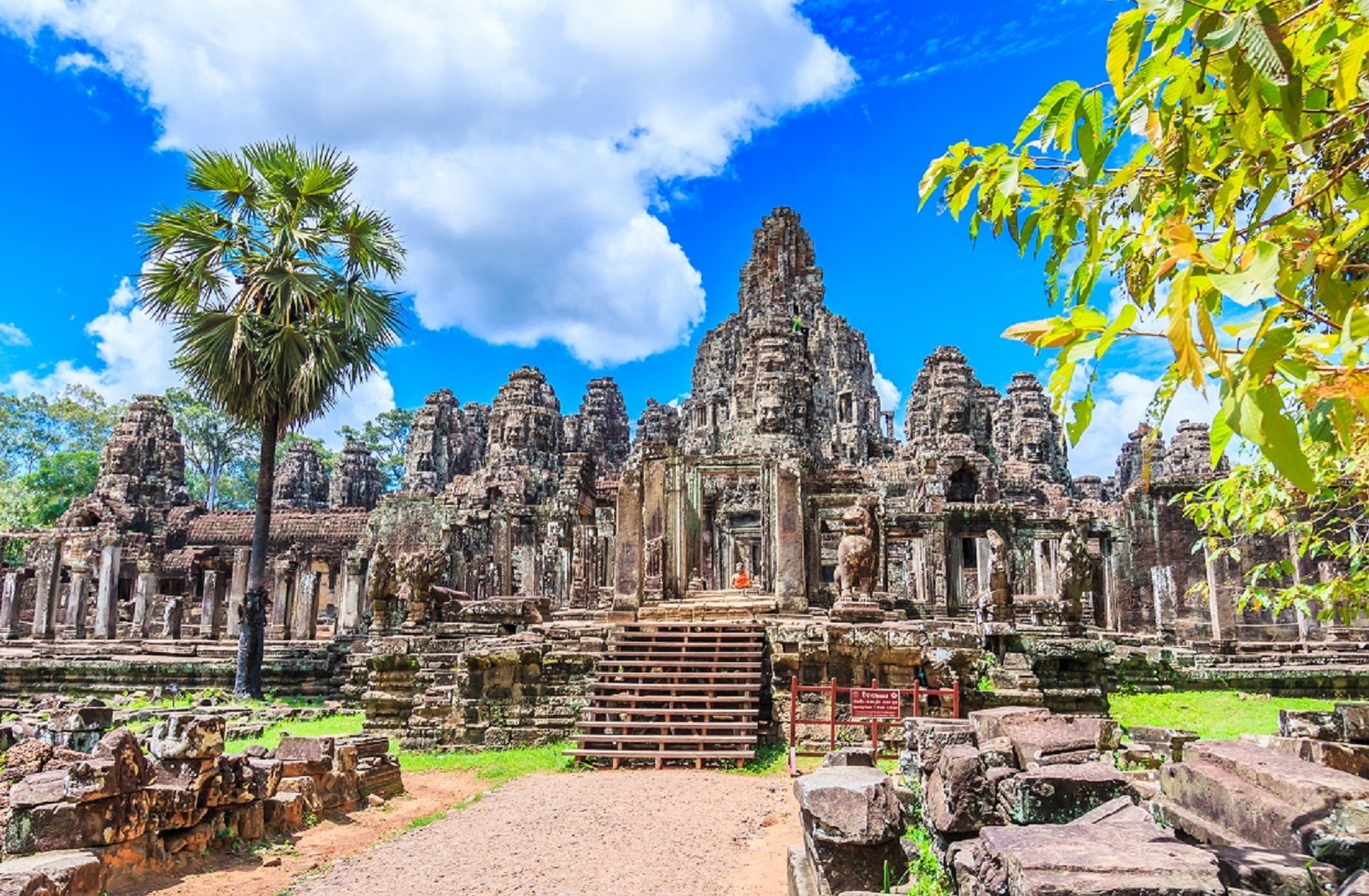
INCLUDED IN THE TOUR PRICES ARE:
- Vietnam visa approval number processing fee
- Accommodation & daily breakfast
- Transportation on tour in air-conditioned vehicles
- Local English speaking guides
- Entrance fees for all sight-seeing tours as specified in the itinerary
- Meals as specified in the itinerary
- Bottled water for sightseeing tours
- International air ticket reconfirmation
NOT INCLUDED IN THE TOUR PRICES ARE:
- Vietnam visa stamping fee
- Cambodia, Laos, Thailand, Myanmar visa (where applicable)
- International airfares
- Beverages during included meals
- All personal expenses
- Personal insurance
- Gratuities for guide, driver, waiter/waitress, bell boy, boat crew etc.
- All other services not mentioned in the itinerary












